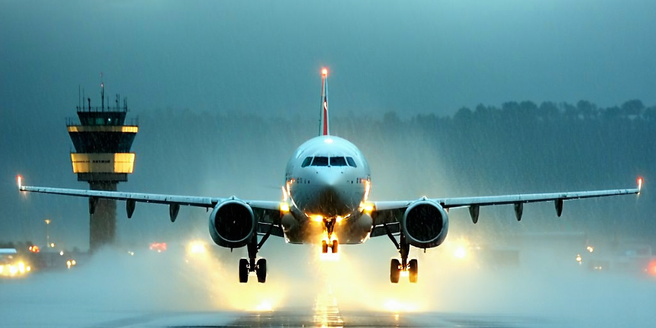
Understanding Wind Shear and Its Causes
Wind shear refers to the rapid change in wind speed or direction over a short distance in the atmosphere. This phenomenon is often associated with different weather conditions, such as thunderstorms, cold fronts, and weather fronts. In aviation, understanding wind shear is crucial because it can significantly impact flight operations by creating turbulence. The most common causes of wind shear include thunderstorms and microbursts, low-level temperature inversions, and jet streams. Pilots and meteorologists use advanced technology and instruments to predict and monitor these changes. By grasping the dynamics and underlying causes of wind shear, pilots can make informed decisions when conducting flight operations, thereby ensuring safety. The sudden shifts in wind patterns challenge pilots to remain vigilant, especially during critical phases of flight like takeoff and landing, when they are most vulnerable to abrupt changes in wind conditions.
Impact of Wind Shear on Aircraft Performance
Wind shear can severely impact aircraft performance, particularly during takeoff and landing. These are the flight phases where changes in lift and control become critical. When a plane encounters wind shear, pilots may experience sudden changes in airspeed and altitude. This can lead to loss of control if not properly managed. Pilots rely on onboard systems to alert them of potential wind shear conditions, allowing them time to adjust flight paths or postpone landing. Furthermore, wind shear can increase fuel consumption and cause structural strain on the aircraft. Understanding how wind shear affects performance helps in the design of more resilient aircraft and the training of pilots. Manufacturers focus on enhancing flight control systems to better handle abrupt changes in wind conditions, thus aiming to mitigate the risk factors associated with this atmospheric phenomenon.
Pilot Techniques for Managing Wind Shear
Managing wind shear effectively requires pilots to be well-trained and equipped with the right strategies. One critical technique is maintaining situational awareness by continuously monitoring atmospheric conditions and indicators. Pilots are trained to recognize the warning signs of wind shear, such as rapidly changing airspeed and sudden altitude variations. When encountering wind shear, it’s crucial to follow the standard operating procedures, which might involve adjusting the flight path, changing aircraft configuration, or increasing thrust to maintain control. Communication with air traffic control is also essential for real-time updates on weather conditions. Pilots commonly use the Wind Shear Escape maneuver, which involves increasing power and carefully controlling climb or descent rates. Constant training and simulation exercises help pilots develop the skills needed to handle wind shear, ensuring safe flight operations.
Technological Tools for Wind Shear Detection
Advancements in technology have greatly improved the detection and prediction of wind shear, enhancing flight safety. Onboard aircraft systems like Doppler radar and predictive wind shear alerts detect abrupt wind changes, providing pilots with crucial information. These systems can determine the intensity and location of potential wind shear, allowing for timely evasive maneuvers. Ground-based systems also play an essential role, using multiple radar installations to monitor weather patterns around airports. Low-Level Wind Shear Alert Systems (LLWAS) have been installed at key airports worldwide, offering real-time warnings to air traffic control and pilots. The integration of these technologies ensures comprehensive monitoring of atmospheric conditions, enabling prompt responses to wind shear threats. Continuous development in these tools is necessary to enhance their accuracy, further safeguarding aircraft from unexpected wind shear encounters.
Case Studies of Wind Shear Incidents
Examining case studies of wind shear incidents provides valuable insights into how such events are managed and understood. One notable case occurred at Dallas/Fort Worth International Airport in 1985, involving Delta Airlines Flight 191. The aircraft encountered a microburst-induced wind shear during its final approach, leading to a crash. Investigations revealed a lack of understanding and predictive technology for microbursts at the time. This incident spurred advancements in detection systems like onboard Doppler radar. Another case involved Eastern Air Lines Flight 66 in 1975, which crashed due to wind shear while landing at New York’s JFK Airport. Analysis of these incidents has led to improved pilot training programs, emphasizing the importance of recognizing and reacting to wind shear conditions. Such case studies highlight the critical role of advanced technology and training in mitigating wind shear risks in aviation.
